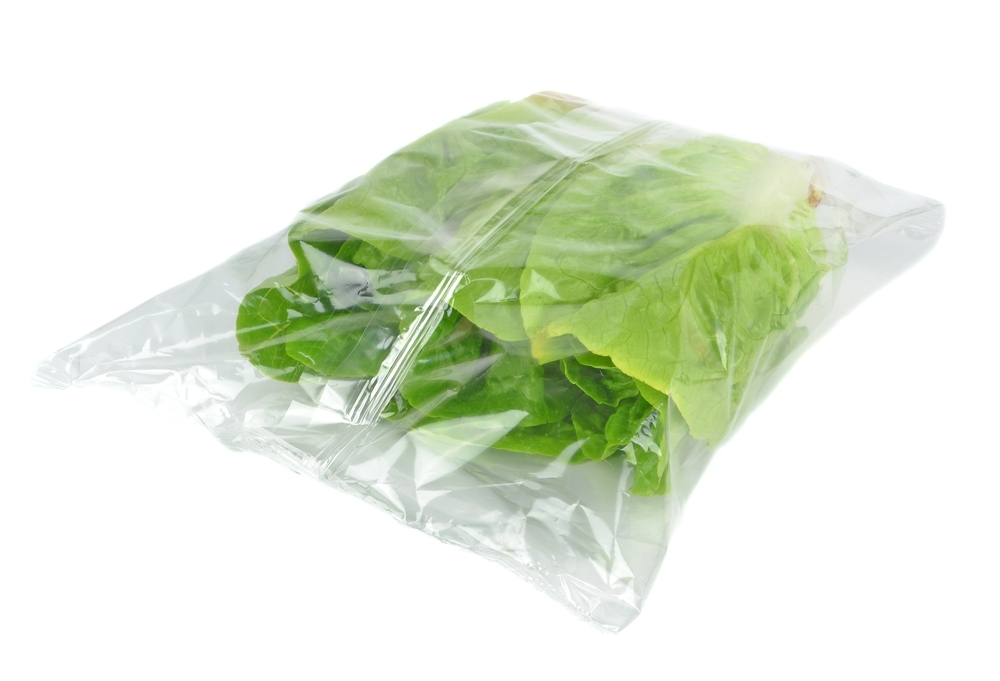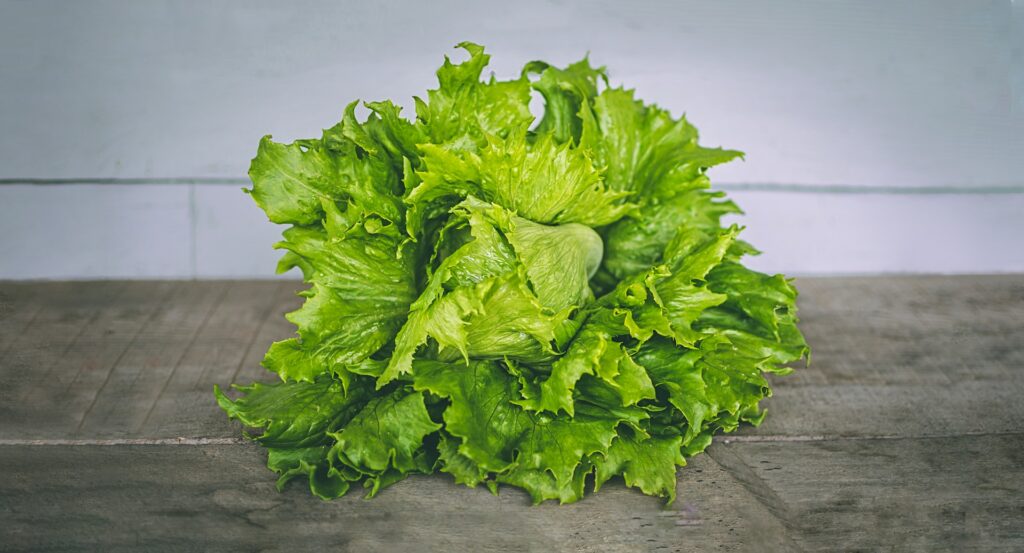Freezing lettuce may seem like an odd concept, but it can be a great way to extend the shelf life of this leafy green vegetable.
While lettuce is typically best consumed fresh, freezing it can help prevent waste and allow you to enjoy lettuce even when it’s out of season.
To understand how to freeze lettuce properly, it’s important to first understand the vegetable itself. Lettuce is a delicate leafy green that can wilt easily, and freezing it can be challenging.
However, with the right preparation and storage techniques, it is possible to freeze lettuce and preserve its texture and flavor.
Key Takeaways
- Freezing lettuce can help extend its shelf life and prevent waste.
- Lettuce is a delicate vegetable that can be challenging to freeze, but with proper preparation and storage techniques, it can be done successfully.
- When freezing lettuce, it’s important to separate and wash the leaves thoroughly, dry them completely, and store them in an airtight container or freezer bag.
Understanding Lettuce

Types of Lettuce
Lettuce is a leafy green vegetable that is widely used in salads and sandwiches. There are many varieties of lettuce, each with its own unique characteristics and flavors. Some of the most common types of lettuce include:
- Head lettuce: This type of lettuce has a tight, compact head of leaves and a crisp texture. Examples include iceberg, butterhead, and crisphead lettuce.
- Romaine lettuce: This type of lettuce has long, narrow leaves and a slightly bitter flavor. It is often used in Caesar salads.
- Leaf lettuce: This type of lettuce has loose, tender leaves and a mild flavor. It comes in a variety of colors, including green, red, and purple.
- Cos lettuce: Also known as romaine lettuce, this type of lettuce has long, narrow leaves and a crunchy texture. It is often used in Greek salads.
Water Content in Lettuce

Lettuce is made up mostly of water, which gives it a crisp, refreshing texture. However, the amount of water in lettuce can vary depending on the type of lettuce and how it is grown.
For example, iceberg lettuce has a high water content and a mild flavor, while romaine lettuce has a lower water content and a slightly bitter flavor.
When freezing lettuce, it is important to consider its water content. Freezing causes ice crystals to form within the lettuce’s cell walls, which can cause the cells to rupture and lead to an off-tasting and unsightly crystallization.
Therefore, lettuce with little water content tends to freeze better than lettuce with high water content.
Why Freeze Lettuce

Freezing lettuce is a great way to extend its shelf life. Fresh lettuce can spoil quickly, but frozen lettuce can last up to six months. This is especially useful if you have homegrown lettuce and want to preserve it for future use.
Freezing lettuce is also a great way to reduce waste. If you have extra lettuce that you know you won’t be able to use before it spoils, freezing it is a great option. You can then use the frozen lettuce in soups, stews, smoothies, and other dishes.
It is important to note that freezing lettuce will change its texture. The ice crystals that form during the freezing process can cause the lettuce to become softer and more delicate.
This means that frozen lettuce is not suitable for use in salads or other dishes where texture is important.
Overall, freezing lettuce is a great way to extend its shelf life and reduce waste. As long as you are aware of the changes in texture that will occur, frozen lettuce can be a great addition to your kitchen.
Can You Freeze Lettuce
Lettuce is a popular leafy vegetable that is often used in salads, sandwiches, and wraps. However, sometimes you may have more lettuce than you can use before it goes bad. In such cases, you may be wondering if you can freeze lettuce to extend its shelf life.
The short answer is yes, you can freeze lettuce. However, it is important to note that not all types of lettuce freeze well. Lettuce with thicker leaves like romaine, cos, and boston tend to freeze better than thinner lettuce like iceberg.
Before freezing lettuce, it is important to prepare it properly. Here are some steps to follow:
- Wash the lettuce thoroughly and dry it completely.
- Remove any damaged or wilted leaves.
- Cut the lettuce into bite-sized pieces or leave it whole depending on your preference.
- Place the lettuce in a freezer bag or an airtight container.
- Label the container with the date of freezing and place it in the freezer.
It is important to note that frozen lettuce will not have the same texture as fresh lettuce when it thaws. Frozen lettuce is best used in cooked dishes like soups, stews, and casseroles.
Overall, while freezing lettuce is possible, it is not recommended unless you have an excess amount that you cannot consume before it goes bad.
How to Freeze Lettuce

When it comes to freezing lettuce, there are a few things to keep in mind to ensure that the lettuce remains fresh and crisp. In this section, we will go over the preparation process and the freezing process to help you freeze lettuce effectively.
Preparation Process
Before freezing lettuce, it is important to properly prepare it. Here are the steps to follow:
- Wash the lettuce leaves thoroughly under running water.
- Use a salad spinner or paper towels to remove excess moisture from the leaves.
- Remove any damaged or wilted leaves.
- Cut the lettuce leaves into bite-sized pieces or leave them whole, depending on your preference.
- Place the lettuce in a freezer-safe bag or container.
Freezing Process
Once the lettuce has been prepared, it is time to freeze it. Here are the steps to follow:
- Place the prepared lettuce in a single layer on a baking sheet or tray.
- Put the tray in the freezer and let the lettuce freeze for 2-3 hours.
- Once the lettuce is frozen, transfer it to a freezer-safe bag or container.
- Label the bag or container with the date and contents.
- Place the bag or container in the freezer.
It is important to note that whole lettuce leaves do not freeze well and may become limp and watery when thawed. To avoid this, it is best to chop the lettuce into smaller pieces before freezing.
Using ice cube trays to freeze puréed lettuce is also an option. However, it is important to keep in mind that the freezing process can cause ice crystals to form in the lettuce, which can damage the cell walls and affect the texture of the lettuce when thawed.
To prevent freezer burn, make sure to remove as much air as possible from the bag or container before placing it in the freezer. Additionally, it is best to use frozen lettuce within 2-3 months for optimal freshness.
By following these steps, you can freeze lettuce effectively and enjoy fresh, crisp lettuce even when it is out of season.
Using Frozen Lettuce

When it comes to using frozen lettuce, it’s important to note that not every type of lettuce can be frozen, and it won’t have the same texture as fresh lettuce.
However, frozen lettuce can still be used in a variety of dishes, depending on how it is prepared and how it is used. Here are some ways to use frozen lettuce:
In Smoothies
Frozen lettuce can be a great addition to smoothies, especially green smoothies. To use frozen lettuce in a smoothie, simply blend it with other ingredients like fruit, yogurt, and milk.
The frozen lettuce will add a refreshing and nutritious boost to the smoothie.
In Soups and Stews
Frozen lettuce can also be used in soups and stews. To use frozen lettuce in a soup or stew, puree the frozen lettuce leaves and add it to the soup or stew towards the end of cooking. This will give the soup or stew a fresh and vibrant flavor.
In Casseroles and Quiches
Frozen lettuce can also be used in casseroles and quiches. To use frozen lettuce in a casserole or quiche, puree the frozen lettuce leaves and mix it with other ingredients like eggs, cheese, and vegetables. This will add a unique flavor and texture to the dish.
In Wraps and Sandwiches
Frozen lettuce can also be used in wraps and sandwiches. To use frozen lettuce in a wrap or sandwich, defrost the lettuce and use it as you would fresh lettuce. This will give the wrap or sandwich a refreshing and crisp texture.
Overall, frozen lettuce can be a great addition to a variety of dishes, as long as it is prepared and used properly. Whether you are making a smoothie, soup, casserole, or wrap, frozen lettuce can add a unique flavor and texture to your dish.
Storing and Thawing Lettuce

When it comes to storing lettuce, there are a few things to keep in mind to ensure it lasts as long as possible. The method you choose will depend on when you plan to use the lettuce and how long you need to store it.
In the Refrigerator
If you plan to use the lettuce within a few days, storing it in the refrigerator is your best bet. Here’s how to do it:
- Remove any damaged leaves and cut off the bottom of the stem.
- Rinse the lettuce in cold water and pat it dry with a paper towel.
- Wrap the lettuce in a paper towel and place it in a plastic bag or container with a lid.
- Store the lettuce in the refrigerator for up to 5 days.
It’s important to note that lettuce is sensitive to ethylene gas, which is produced by some fruits and vegetables. To prevent your lettuce from spoiling quickly, store it separately from ethylene-producing produce like apples and bananas.
At Room Temperature
If you need to store lettuce for longer than 5 days, you can freeze it. However, if you plan to use the lettuce within a week, you can store it at room temperature.
Here’s how:
- Remove any damaged leaves and cut off the bottom of the stem.
- Rinse the lettuce in cold water and pat it dry with a paper towel.
- Wrap the lettuce in a paper towel and place it in a plastic bag or container with a lid.
- Store the lettuce in a cool, dry place away from direct sunlight.
It’s important to note that lettuce stored at room temperature will wilt faster than lettuce stored in the refrigerator. If you notice the lettuce starting to wilt, move it to the refrigerator to extend its lifespan.
When it comes to thawing frozen lettuce, the best method is to let it thaw in the refrigerator overnight. Once thawed, the lettuce will be wilted and best used in cooked dishes like soups and stews. It’s not recommended to eat thawed lettuce raw as it will have a mushy texture and may not be safe to consume.
Potential Downsides of Freezing Lettuce
While it is possible to freeze lettuce, there are potential downsides to doing so. Freezing lettuce can cause damage to the cell walls of the plant cells, which can result in a change in texture and a loss of crispiness.
Instead of a fresh, crispy salad, thawed lettuce can become a slimy mess.
One of the main issues with freezing lettuce is cell wall damage. The water in the plant cells expands when it freezes, which can cause the cell walls to rupture.
This can result in a loss of texture and a change in the appearance of the lettuce. Thawed lettuce can become wilted and slimy, which can make it unappetizing.
Another potential downside of freezing lettuce is the loss of flavor. Lettuce is primarily made up of water, and when it is frozen, the water content can be affected.
Improperly frozen and thawed lettuce can have a watered-down flavor and texture, which can make it less enjoyable to eat.
In addition, not all types of lettuce freeze well. Lettuce with thicker leaves tends to freeze better than thinner lettuce. Baby arugula, for example, does not freeze well and should not be frozen if you want to maintain its quality.
Overall, while it is possible to freeze lettuce, it is not recommended if you want to maintain its crispiness and fresh flavor. If you do decide to freeze lettuce, it is important to freeze it properly and use it in cooked dishes rather than raw salads.
Conclusion
In conclusion, freezing lettuce is possible, but it is not recommended. Freezing lettuce can cause it to lose its texture, color, and flavor. The lettuce leaves can become wilted and soggy when defrosted, making it unappetizing.
However, if you have an abundance of lettuce and do not want it to go to waste, freezing it may be a viable option.
When freezing lettuce, it is important to follow the proper steps. First, separate the lettuce leaves and remove any damaged or discolored leaves.
Then, wash the leaves thoroughly and dry them completely. After that, pack the lettuce into an airtight container or freezer bag, and remove as much air as possible before sealing it.
When it comes to defrosting frozen lettuce, it is best to do it slowly in the refrigerator. This will help preserve the texture and flavor of the lettuce.
It is not recommended to defrost lettuce in the microwave or by placing it in warm water, as this can cause the lettuce to become mushy.
Overall, while freezing lettuce is possible, it is not the best option for preserving its quality. It is recommended to consume lettuce fresh or store it in the refrigerator for a few days.
If you have excess lettuce that you cannot consume in time, consider donating it or using it in recipes that can be frozen, such as soups or stews.
Related post: Can You Freeze Kaffir Lime Leaves
Frequently Asked Questions
Can you freeze iceberg lettuce?
Yes, you can freeze iceberg lettuce. However, it is important to note that the texture of the lettuce will change once it is frozen and thawed. The lettuce will become softer and may not be suitable for salads or sandwiches. It is best to use frozen iceberg lettuce in cooked dishes or smoothies.
Can you freeze shredded lettuce?
Yes, you can freeze shredded lettuce. To freeze shredded lettuce, spread the shredded lettuce on a baking sheet and freeze it for a few hours. Once the lettuce is frozen, transfer it to a freezer-safe bag or container and store it in the freezer. Frozen shredded lettuce can be used in smoothies, soups, and cooked dishes.
How to unfreeze lettuce?
To unfreeze lettuce, transfer it from the freezer to the refrigerator and let it thaw overnight. Once the lettuce is thawed, use it as soon as possible. Do not refreeze thawed lettuce.
How to thaw frozen romaine lettuce?
To thaw frozen romaine lettuce, transfer it from the freezer to the refrigerator and let it thaw overnight. Once the lettuce is thawed, use it as soon as possible. Do not refreeze thawed lettuce.
Can you freeze romaine lettuce hearts?
Yes, you can freeze romaine lettuce hearts. To freeze romaine lettuce hearts, wash and dry them thoroughly, wrap them in plastic wrap, and place them in a freezer-safe bag or container. Frozen romaine lettuce hearts can be used in cooked dishes or smoothies.
Does lettuce freeze well?
Lettuce can be frozen, but its texture will change once it is frozen and thawed. Frozen lettuce is best used in cooked dishes or smoothies. It is not recommended to use frozen lettuce in salads or sandwiches.







